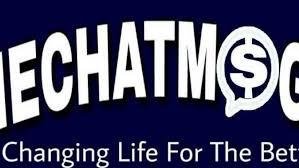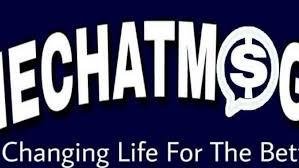Dating has evolved drastically over the last decade, and dating apps are at the forefront of this transformation. These platforms, once considered niche and unconventional, are now an integral part of modern romance. But how are dating apps reshaping the dynamics of human relationships, and what makes them such a popular choice for finding love?
This blog post explores the impact, features, and challenges of dating apps, along with how they’ve influenced the way we connect in the digital age.
What Are Dating Apps?
Dating apps are mobile applications designed to connect people interested in forming romantic relationships. Unlike traditional dating websites, apps are engineered for on-the-go use, often making the process more accessible and immediate. Popular platforms like Tinder, Bumble, and Hinge all offer distinct features, but their goals align—to facilitate connections that might lead to dating, friendship, or even long-term partnerships.
Each app operates on different niches. From matchmaking for long-term relationships (e.g., eHarmony) to location-based casual dating (e.g., Tinder), these platforms cater to a range of user preferences.
Why Dating Apps Have Become a Modern Staple
Dating apps were initially perceived with skepticism, but today, they’re one of the most common ways for couples to meet. Here’s why they’ve seen such widespread adoption:
1. Convenience and Accessibility
Gone are the days when you needed to attend social gatherings or leave your home to meet potential partners. Dating apps make it possible to connect with people while you’re sitting on your couch, commuting, or even waiting for your coffee. The convenience factor is a major reason why dating apps have flourished.
2. A Larger Pool of Matches
Dating apps expose users to individuals outside their immediate social or geographic circles. With global connectivity at your fingertips, it’s easier than ever to find someone who aligns with your preferences, values, and lifestyle.
3. Tailored Matches Through Technology
Advanced algorithms have made matchmaking smarter than ever. Many apps analyze your interests, activity patterns, and preferences to recommend compatible matches. This personalization not only increases the likelihood of finding someone compatible but also saves time.
4. Breaking Cultural Barriers
Dating apps have played a significant role in breaking down social and cultural barriers in relationships. They allow people to engage with individuals from different backgrounds, religions, and countries, fostering diversity in modern dating.
How Dating Apps Work
Understanding how dating apps operate can help you make the most of them. Most platforms follow a basic flow, with a twist that aligns with their specific audience.
Account Creation and Profile Setup
Most dating apps require you to set up a profile with photos and a short bio. Apps like Hinge place greater emphasis on detailed profiles with prompts that encourage meaningful interactions, while Tinder keeps it simple with a photo-first approach.
Matching Algorithm
Matching mechanisms range from simple swiping (Tinder) to intricate compatibility tests (OkCupid). These algorithms consider factors like age, location, hobbies, and mutual interests to recommend potential matches.
Communication Tools
Most apps provide messaging as a core feature, but some, like Bumble, add unique twists. For instance, Bumble requires women to send the first message, giving them control over the interaction.
Subscription Tiers
While most dating apps offer free basic features, premium tiers unlock advanced functionality such as unlimited swipes, profile boosts, or enhanced preferences. These subscription options cater to users looking for a more tailored experience.
Benefits of Using Dating Apps
While they’re not without their challenges, dating apps bring clear advantages, making them a widely-used tool for modern singles.
● Flexibility: Connect anytime, anywhere, without the constraints of physical proximity.
● Efficiency: Filters and algorithms save time by aligning matches with your preferences.
● Exposure to New Opportunities: Meet people you would never cross paths with in your daily life.
● Self-Discovery: The profile-building process forces users to define their interests, goals, and values, fostering self-awareness.
Challenges of Dating Apps
While dating apps have revolutionized how we connect, they aren’t without obstacles.
1. Overwhelming Choices
Dating apps can expose users to so many options that it becomes difficult to make a decision. Known as “choice overload,” this phenomenon can lead to burnout or superficial interactions.
2. Catfishing and Authenticity
Unfortunately, not everyone on dating apps is authentic with their intentions or identity. Apps like Hinge and Bumble tackle this issue with verification features, but it’s still a prevalent concern.
3. Boosting Premium Features
Another criticism of dating apps is the growing emphasis on premium memberships. While free versions still offer plenty of functionality, advanced features often come with a hefty price tag.
4. Dependency on Technology
Virtual interactions can sometimes replace meaningful in-person connections. While dating apps facilitate introductions, fostering genuine relationships often relies on stepping outside the digital realm.
Tips for Success on Dating Apps
Want to increase your chances of success while navigating the dating app landscape? Here are some practical tips to get started:
- Craft a Strong Profile
Your profile is your first impression! Use a clear photo and a bio that genuinely reflects your interests and personality.
- Be Selective
Focus on quality over quantity when swiping or connecting. Engaging with too many matches at once may result in lackluster conversations.
- Stay Genuine
Authenticity goes a long way. Be honest about your intentions, values, and what you're looking for in a partner.
- Set Boundaries
Dating apps can be addictive, so make sure you limit your usage and prioritize offline interactions.
- Stay Safe
Always stay cautious when meeting new people. Arrange first dates in public places and avoid sharing personal information too early.
What’s Next for Dating Apps?
The future of dating apps will likely involve even more innovations in personalization and technology. Machine learning, AI, and even virtual reality could reshape how these platforms operate. Additionally, as privacy concerns grow, more apps are prioritizing user safety and data protection to sustain trust.
If you’re a content creator or marketing professional, it’s clear that dating apps are not just tools for individuals but also powerful platforms for understanding behaviors and creating targeted campaigns. That’s another dimension of their rising influence across industries.
Find Love in the Swipe of a Finger
Dating apps have undeniably transformed modern dating, bridging gaps, reducing barriers, and creating opportunities to form connections that were once impossible. Whether you’re looking for a lifelong partner, a new group of friends, or anything in between, these tools are here to make your search more accessible, efficient, and exciting.


